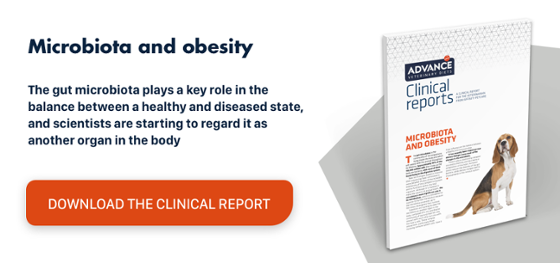Sterilisation of female dogs: weighing up the choices
The sterilisation of female dogs not only prevents unwanted litters, but it can also prevent various hormone-dependent diseases and increase life expectancy. However, it must be an informed decision, as in some cases the benefits of sterilisation may not outweigh the risks or possible complications.
Yet it should be noted that the surgical techniques have evolved over time, as the sterilisation of female dogs is now performed using smaller incisions and produces much less trauma.
Main pros and cons of the sterilisation of female dogs
Sterilisation prevents pyometra, a problem associated with the action of progesterone that affects between 10 and 25% of entire female dogs under 10 years old. If sterilisation is performed before the first oestrous, the likelihood of developing mammary tumours, a common problem in entire female dogs, falls to 0.5%. It also reduces the risk of ovarian cysts and tumours, uterine and vaginal tumours, and the typical post-oestrous urinary tract infections.
However, a decision on surgical sterilisation must only be reached after considering the characteristics of each individual case. Do not forget that as the animal’s metabolism is altered, its energy requirements drop by 20–30%, which leads to obesity and all its associated diseases. Fortunately, the problem can be avoided through an appropriate diet formulated to satisfy appetite and provide all the necessary nutrients but with fewer calories, such as the Advance Weight Balance diet.
On the other hand, the sterilisation of female dogs almost doubles the incidence of diseases such as atopy, hypothyroidism, chronic digestive disorders and immune mediated thrombocytopaenia. Another problem that affects 2–20% of sterilised female dogs is urinary incontinence due to reduced sphincter tone, although it is more common in large breeds weighing over 20 kg.
What sterilisation techniques do pet owners in the veterinary community prefer?
A study published in the journal Veterinary Surgery1 looked at the sterilisation technique preferences of 1,234 dog owners at five university veterinary teaching hospitals in North America. The options analysed were open coeliotomy, double-port laparoscopy, single-port laparoscopy and natural orifice transluminal endoscopic surgery.
Pet owners preferred technique was a double-port laparoscopic ovariectomy followed by single-port ovariectomy. Natural orifice transluminal endoscopic surgery was the least popular technique when other surgical options were available. In fact, 48% of respondents were willing to spend $100 to $200 more for a minimally invasive ovariectomy than for an open coeliotomy.
It should be noted that while these results cannot be extrapolated to the general population of pet owners, most of them probably prefer minimally invasive operations as they are associated with fewer complications, less need for anaesthesia and a quicker recovery.
A study published in the Veterinary Research Forum2 performed a traditional ovariectomy on eight female dogs with an incision from the navel to the caudal midline and used a double-port (5 and 10 mm) laparoscopic approach on eight other females. The authors compared average operating time, total wound length, blood loss, clinical and blood parameters, and intra- and postoperative complications.
They found that the mean operating time, total wound length, blood loss and postoperative adhesions were significantly lower in the group that underwent laparoscopy compared with open surgery, hence it is a more favourable procedure.
Another study conducted by Tapia-Araya et al.3 compared the use of single-port laparoendoscopic ovariectomy and triple-port laparoscopic ovariectomy. The researchers found no significant differences in surgical time or perioperative complications, although the single-port laparoendoscopic learning curve was more complex, so they concluded that veterinary surgeons should use the technique they perform best.

